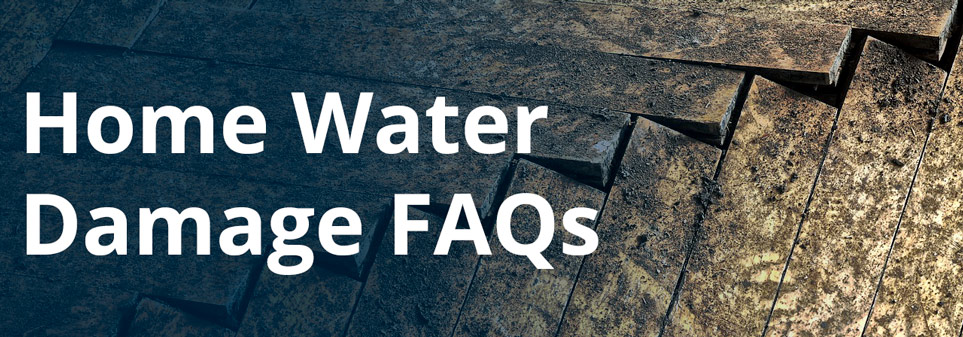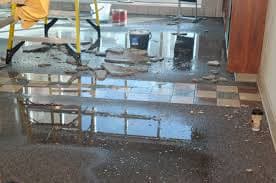
What do you do if your house has water damage?
The first thing you want to do is to stop the water from flowing. Before you should attempt to enter the affected areas, you will want to determine if it is safe to enter by recognizing and understanding the following safety hazards:
- Electrocution – Electrical outlets near or on the floor, power supplies, extension cords, appliances, or electrical equipment in the affected areas
- Falling hazards – When building materials become wet, they lose their structural integrity and weaken. You will want to look out for sagging or fallen ceilings, fixtures and building materials
- Bodily injury – broken glass, nails, screws, and sharp edges from fallen debris hidden in the water

Once you have determined if it is safe to enter the affected areas, the first thing you will want to do is stop the water from flowing. To do this you must:
- Identify the source that is causing the damage
- Stop the source of the loss: See below for suggestions based on the source of the loss
- If the source is a burst pipe, leaking appliance, or other plumbing malfunction you will want to shut off the water supply. If you are not successful finding the shutoff, you will want to consult a professional to shut the water off and make repairs as quickly as possible
- If the source was a sewer or drain backup, contact a plumbing professional to clear the clog.
- If the source was flooding, stay out of the home until the water recedes and officials determine that the home is safe to enter.
- If the source was from a crack in your foundation, you will want to contact a waterproofing specialist to identify and correct the issues.
- Get rid of the water.
How do you get water out of your house?
When water infiltrates a home, it will follow the path of least resistance affecting walls, ceilings, floors and so on. What this means is that the pipe burst may have happened in a 2nd-floor bathroom but can flow under walls, through cracks and holes into surrounding rooms and down through the floor affecting the 1st floor, and can continue down into the basement. The reason for understanding how water travels through a home is so important is because you will need to trace the migration of the water to dry a structure. To get rid of the water you will need to remove as much of the standing water as possible. Depending on how much water is involved several different tools can be used to remove the water. Some of these tools include:
- sump pumps
- shop-vacs
- mops
- towels
- anything else that will absorb water
Once the water has been removed you want to inspect the building materials to determine whether they should be removed or not to promote drying. Once you have removed the water and performed any necessary demolition, you will want to dry the wet materials using dehumidification and airflow. Due to the nature of water damage and how it migrates through a home, we highly recommend calling an IICRC Certified Water Restoration Company to mitigate the damages.
How long does it take to repair water damage?
There are two steps when dealing with water damage:
- Water mitigation – The act of drying the structural materials back to their dry standard. This phase can take anywhere from 72 hours to a week or more depending on the size and severity of the damage.
- Rebuild – Once the structure is clean and dry the time frame for rebuilding the structure will depend on the size and scope of the repairs.
How long does it take for mold to die without moisture?
Mold does not dry out and die, even without moisture. Mold will go dormant if there is not a moisture supply available and will remain on the surface until its either removed or a moisture source returns. Once a moisture source returns, the mold will begin growing and spreading again. If you suspect that you have mold in your home, we recommend that you contact a mold remediation company to properly test for mold and remove it.
How much does it cost to clean up water damage?
Water damage cleanups can vary significantly depending on the size of the loss, the materials that were wet and how long the water was present. One way to know how much it will cost would be to contact Octagon Cleaning and Restoration 24/7/365 for a free inspection. Once on-site they can inspect the damages and provide you with a free estimate for what it would cost to clean and dry the home making it ready for the rebuild portion of the water damage. If you are filing an insurance claim we are required to use standardized pricing when billing for water damage restoration. For further info, see our post on what water damage is covered by home insurance.

